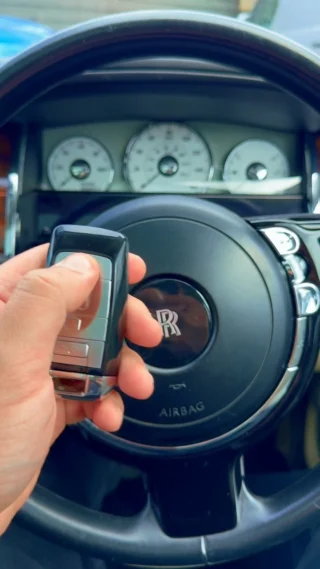You'll Be Unable To Guess Door Lock Repair's Secrets
페이지 정보
작성자 Ricardo 댓글 0건 조회 12회 작성일 25-07-22 07:00본문
Comprehensive Guide to Door Lock Repair: Ensuring Security and Functionality
Door locks play an essential role in securing homes and services, providing peace of mind and securing important possessions. Nevertheless, in time, door locks may experience breakdowns or use out due to numerous elements. This post checks out the typical problems connected to door locks, effective repair methods, and valuable maintenance suggestions for guaranteeing their durability and performance.
Understanding Door Lock Types
Before delving into repair approaches, it is necessary to understand the numerous types of door locks. Each type might provide unique issues requiring various methods to repair. The most typical door lock types consist of:

| Lock Type | Description | Common Issues |
|---|---|---|
| Deadbolts | Bolt that extends into the door frame for security. | Sticking, difficulty turning, misalignment |
| Knob Locks | Round lock discovered on doors. | Loose knobs, stuck key, broken springs |
| Lever Handle Locks | Lever-operated locks frequently found in commercial areas. | Handle looseness, lock cylinder concerns |
| Smart Locks | Electronic locks controlled by means of app or keypad. | Connectivity problems, battery failure, software glitches |
Typical Lock Problems and Repair Techniques
1. Sticking or Jammed Locks
Symptoms:
- Difficulty turning the key
- Key gets stuck
- Lock feels stiff
Repair Steps:
- Lubrication: Apply a graphite-based lube to the keyhole and key mechanism. Avoid oil-based lubes, which can draw in dirt.
- Adjustment: Check if the door lock repair or lock is misaligned. Adjust the screws or hinge positioning as necessary.
- Cleaning: Remove dirt and debris from the lock cylinder using compressed air or a tidy cloth.
2. Loose or Wobbly Knobs and Handles
Signs:
- Knobs or handles fall out of place
- Excessive motion when turning
Repair Steps:
- Tightening Screws: Using a screwdriver, tighten the screws that hold the knob or manage in place.
- Changing Washers: If components are broken, think about changing washers or internal elements specific to the lock type.
3. Broken Key Issues
Signs:
- A key becomes stuck within the lock
- The key breaks off in the cylinder
Repair Steps:
- Retrieval: If a key breaks off, utilize a pair of needle-nose pliers to thoroughly extract the piece from the lock.
- Key Replacement: For seriously damaged keys, obtain a duplicate or rekey the lock to ensure security.
4. Misaligned Locks
Symptoms:
- The door does not close appropriately
- Latch does not engage with the strike plate
Repair Steps:
- Adjust Hinges: Use a screwdriver to tighten or rearrange hinges.
- Straighten Strike Plate: If the lock bolt does not line up with the strike plate, think about moving the plate somewhat to accommodate the lock.
5. Smart Lock Malfunctions
Signs:
- Lock stops working to react to keypads or mobile phone apps
- Connection issues
Repair Steps:
- Battery Check: Replace the batteries within the smart lock if it shows indications of power failure.
- Software Update: Check for firmware or software application updates through the lock maker's application.
Preventive Maintenance Tips
Preserving door locks can extend their lifespan and lower the probability of breakdowns. Consider the following suggestions for reliable lock upkeep:
- Regular Lubrication: Apply graphite-based lubricant every 6 months to keep internal elements moving efficiently.
- Examine Regularly: Periodically inspect locks for any signs of wear, misalignment, or damage.
- Safeguard Against Weather: For exterior locks, think about using weather-resistant locks and guarantee that they are routinely cleaned up to get rid of extreme aspects.
FAQ Section
1. How typically should I change my door locks?
It is recommended to change your door locks whenever you move into a new home, experience a burglary, or your existing locks reveal significant wear. Regular evaluations can likewise guide timely replacement.
2. What can I do if my lock is frozen during winter?
Utilize a lock de-icer that is particularly created for this scenario. Using heat (like a hair clothes dryer) may also help, however beware of damaging the lock.
3. Can I repair a lock myself?
Many minor lock issues such as lubrication, tightening up screws, and realignment can be dealt with DIY. However, if the issue is severe or needs a lock rekeying, expert assistance may be necessary.
4. When should I call a locksmith?
If your attempts to repair the lock fail or if you discover yourself locked out, it is best to seek advice from a professional locksmith for support.
Investing time in understanding and carrying out door lock repairs can substantially improve the security and performance of your locks. Acknowledging common issues and proactively resolving them, while including preventive maintenance practices, can guarantee that your door locks stay trustworthy for years to come. Must issues persist or escalate, professional locksmith services are always offered to safeguard your security needs.

댓글목록
등록된 댓글이 없습니다.

